Dear readers, do you know that there is a unique water park in Camiguin? Allow Tita S to tell you.
Bura Soda Water Park is a resort located in Barangay1 Bura, in the municipality2 of Catarman3, in the island-province4 of Camiguin5, in the Northern Mindanao6 region7 of the Philippines.
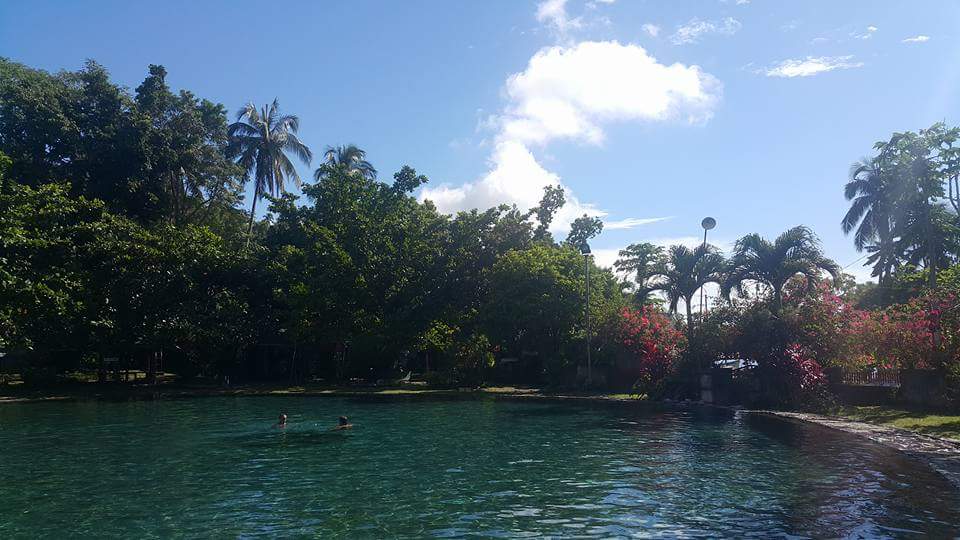
Photo source: https://www.facebook.com/sodanature/photos/866378486809303
It is less than a 30-minute drive from Mambajao, the provincial capital.
You know what makes it unique? It is the only soda water pool in the Philippines! Volcanic springs provide this unique flowing water.
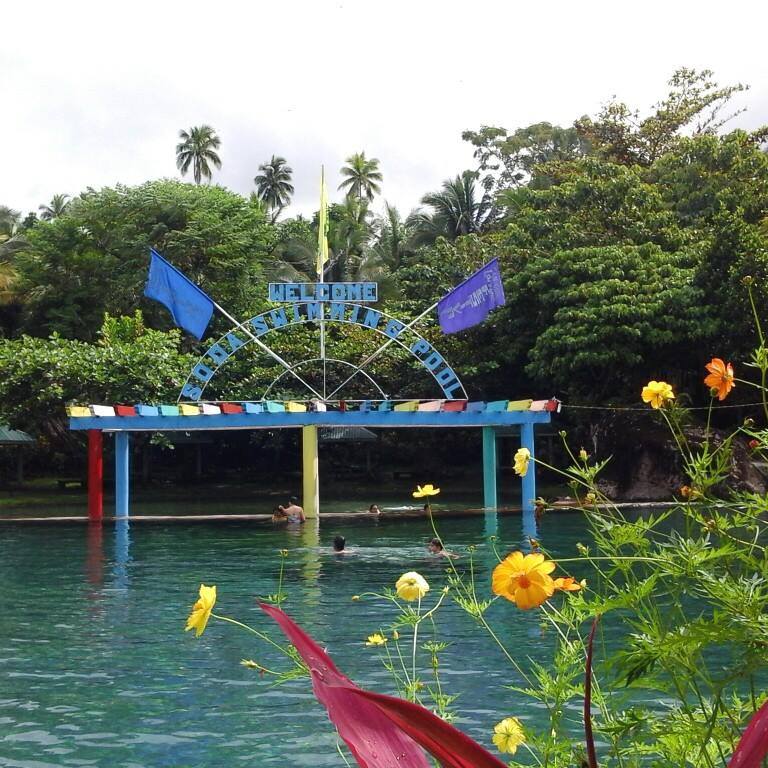
Photo source: https://www.facebook.com/sodanature/photos/a.657519087695245/657870670993420
It is open daily, from 7:00 AM – 10PM.
Better check if they are closed for cleaning, usually on Wednesdays.
You need to pay an entrance fee. The regular rate is PHP50, with a discounted rate for seniors and children below 10-years-old. Better check if these rates are still current.
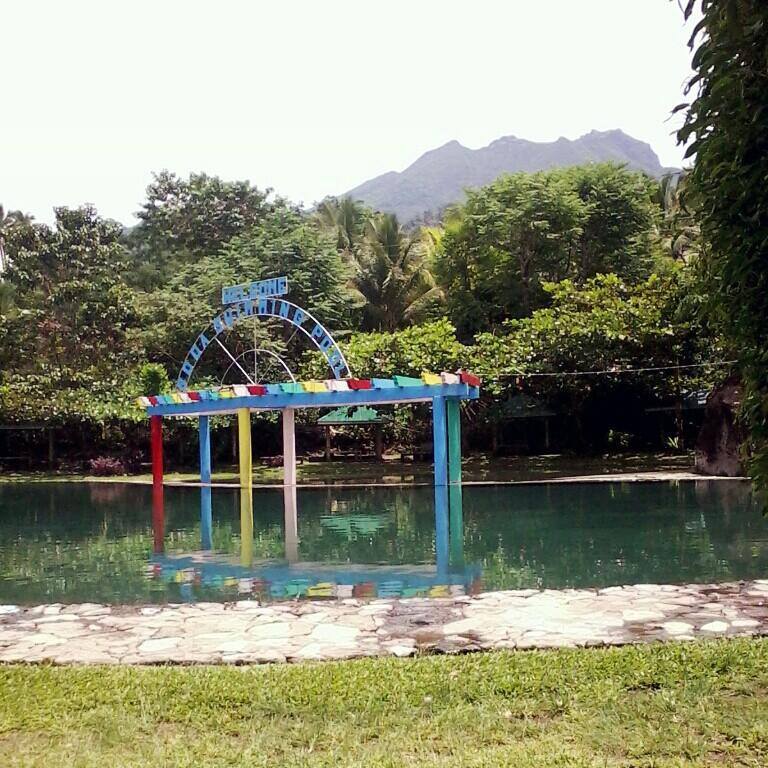
Photo source: https://www.facebook.com/sodanature/photos/a.657519087695245/657519091028578
There is continuous flowing soda water in which any guest can swim (do not drink). However, there is a designated place and faucet for you to taste the natural soda water.
There are signs which state the benefits of soda water: it is good for hydrating, and makes you feel full thereby decreasing your food consumption. It reduces osteoporosis, decreases cardiovascular risks, and lowers blood pressure.
The water is clean and cold in the pools, and regularly maintained.
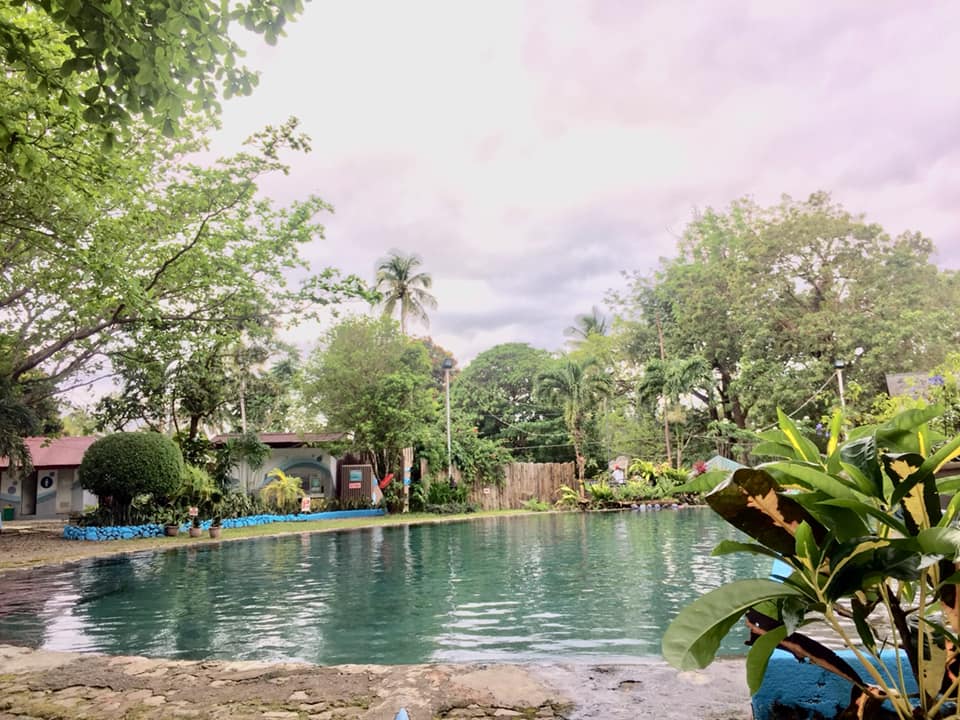
Photo source: https://www.facebook.com/sodanature/photos/3855744634539325
The adult pool’s deepest part is 5 feet deep, while the kiddie pool is 3 feet deep.
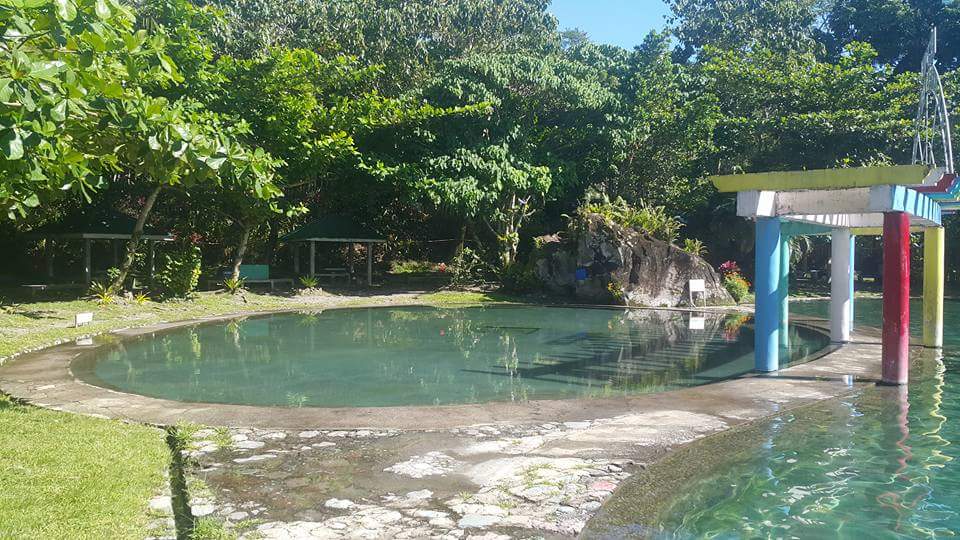
Photo source: https://www.facebook.com/sodanature/photos/866378520142633
A lifeguard is on duty.
The resort offers picnic sheds for rent at PHP75.
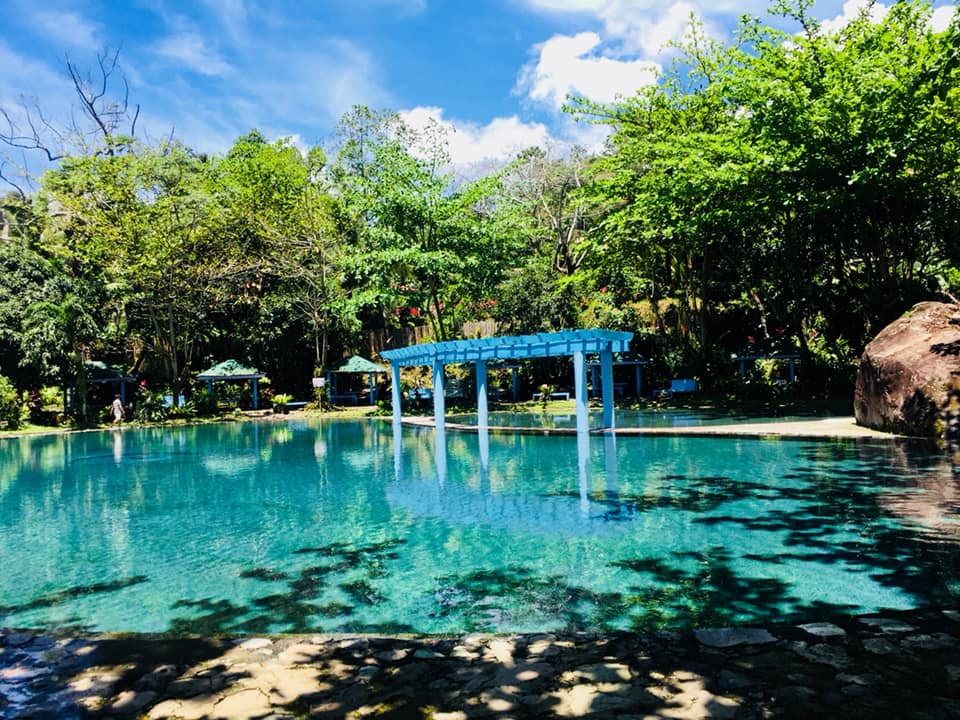
Photo source: https://www.facebook.com/sodanature/photos/3855744017872720
Barbecuing is permitted and there are designated places. Snacks and drinks are sold in a small store.
There is also a playground for kids, and kids-at-heart, to enjoy.
A souvenir shop outside, but near this resort, provides opportunity for buying pasalubong8 before you leave this place.
When in Camiguin5, always remember the provincial policy “Leave No Trace” so dispose of all trash properly during your stay there.
The information was obtained from https://www.lanzonescabana.com/bura-soda-water-swimming-pool/, https://www.touristlink.com/philippines/bura-soda-water-pool/overview.html, https://www.mustseespots.com/philippines/bura-soda-water-swimming-pool, and https://www.cebusite.com/news/2430103/bura-soda-water-swimming-pool-a-place-with-super-clean-water.
Tita S has not been to this unique water park, but it will definitely be part of her Camiguin5 travel bucket list. This province has so many attractions to see and appreciate!
This is not a sponsored post. I just want my readers to know more about the Philippines.
The photo featured in the cover picture-collage was obtained from https://www.facebook.com/sodanature/photos/3855744017872720
Did you find this post informative? I would like to hear your comment/s regarding Bura Soda Water Park, especially if you were able to visit it already.
See other interesting places through other posts in this category and other categories of SCapades, Pinoy Delights, and Smart Travelers – Foreign Travelers Ask, Now You Know, and Say, Say, Say. Happy reading, and I hope that you will appreciate what I shared and some of the featured destinations will be part of your future travel plans!
Remember to share this post with your Facebook friends, and to follow me by clicking on the bottom right corner of your device. And, do not forget to like this post. Thank you.
– – – – – – – – – – – – – – – – – – – – – – – – – –
The following terms are defined for interested readers, especially those with “Senior-Moments”, those not familiar with Filipino terms, and those too busy or lazy to Google such terms:
1A barangay in the Philippines is the smallest administrative division in the Philippines, headed by a barangay captain, aided by a Sangguniang Barangay (Barangay Council). It is the native Filipino term for a village. It was formerly called a barrio. In a metropolitan area, a barangay is an inner city neighborhood, a suburb, or a suburban neighborhood. The word barangay originated from the term balangay, a kind of boat used by a group of Austronesian people who migrated to the Philippines. A number of barangays grouped together is called a district. The information was obtained from Wikipedia page “Barangay.”9
2A municipality is a small, single urban administrative division, or local government unit (LGU), in the Philippines which has corporate status and powers of self-government or jurisdiction as granted by law. It is a unit under a province4, subdivided into barangays1, and is locally called bayan. In the Philippines, a municipality is headed by a mayor, a vice mayor, and members of the Sangguniang Bayan (legislative branch). It can enact local policies and laws, enforce them, and govern its jurisdictions. It can enter into contracts and other transactions through its elected and appointed officials and can tax as well. It enforces all local and national laws. There are almost 1,500 municipalities in the Philippines. The information was obtained from Wikipedia page “Municipalities of the Philippines.”10
3Catarman is a municipality2 in the island-province4 of Camiguin5, in the Northern Mindanao6 region7 of the Philippines. It has an area of 53.75 sq.km. (20.75 sqm.) and 14 barangays1. It is known for the following attractions: Sunken Cemetery; Old Church Ruins or Gui-ob Ruins; the 25-m high Tuasan Falls, the Bura Soda Water Park, and the Santo Niño Cold Spring. The information was obtained from Wikipedia page “Catarman, Camiguin.”11
4A province is the primary administrative and political division in the Philippines. It is the second-level administrative sub-division of a region7. There are 81 provinces (called lalawigan) in the Philippines. Each province is governed by an elected legislature called the Sangguniang Panlalawigan, and by an elected governor. Remember, a province in the Philippines is divided into cities and towns (called municipalities2), which in turn, are divided into barangays1, formerly called barrios. The information was obtained from Wikipedia page “Provinces of the Philippines.”12
See a related post: Foreign Seniors Ask: WHAT ARE PROVINCES IN THE PHILIPPINES?
5Camiguin is a pearl-shaped island-province4 in the Bohol Sea, in the Northern Mindanao6 region7 of the Philippines. Aside from the main island, this province also includes a few other surrounding minor islets like: White Island, about 5 km (3.1 mi) west of the capital-municipality2 of Mambajao (the provincial capital), and, Mantigue Island, about 14 km (8.7 mi) south of Mambajao.
It is the second smallest island in the Philippines, in both land area (238 sq.km. or 92 sqm) and population, next to Batanes, an archipelagic province3 in the northernmost part of the country. It was founded in 1565 and became a province on June 18, 1966.
The information was obtained from Wikipedia page “Camiguin.”13
6Northern Mindanao, or Region 10, is an administrative region7 in the north-central part of Mindanao14, in southern Philippines. It has a total land area of 2,049,602 hectares (5,064,680 acres), with more than 60% classified as forest land. Its waters are rich in marine life. It comprises 5 provinces4: Bukidnon, Camiguin5, Lanao del Norte, Misamis Occidental, and Misamis Oriental. The regional center is the city of Cagayan de Oro.
It is the 8th most populous region in the Philippines, and the 2nd in Mindanao (after Davao Region (Region 11). The vast majority of the region’s inhabitants descended from migrants from Bohol and Cebu.
The information was obtained from the Wikipedia page “Northern Mindanao”.15
7A region is an administrative division based on geographical, cultural and ethnological characteristics. Each region is further subdivided in provinces4, composed of cities and municipalities2 (or towns), which in turn, are divided into barangays1, formerly called barrios, according to Wikipedia page “Regions of the Philippines” 16.
See a related post: Foreign Seniors Ask: WHAT ARE THE REGIONS OF THE PHILIPPINES?
8Pasalubong is the Filipino term referring to both the tradition of giving gifts or souvenirs, as well as to the actual gift itself, from a destination visited by a Filipino, to family and friends upon one’s return home.
9“Barangay,” accessed December 30, 2018, https://en.m.wikipedia.org/wiki/Barangay
10“Municipalities of the Philippines,” accessed January 29, 2019, https://en.wikipedia.org/wiki/Municipalities_of_the_Philippines
11“Catarman, Camiguin,” accessed February 2, 2021, https://en.wikipedia.org/wiki/Catarman,_Camiguin
12“Provinces of the Philippines,” accessed May 29, 2019, https://en.wikipedia.org/wiki/Provinces_of_the-Philippines
13“Camiguin,” accessed February 2, 2021, https://en.wikipedia.org/wiki/Camiguin
14Mindanao is one of the 3 major geographical divisions of the Philippines. It is the second largest island of the country and covers 6 administrative regions7: Caraga, Davao, Northern Mindanao6, SOCCSKSARGEN, Zamboanga Peninsula, and the Bangsamoro Autonomous Region in Muslim Mindanao (BARMM). It is composed of 22 provinces4 and 33 cities (27 provinces and 33 cities, if associated islands are included). The information was obtained from Wikipedia page “Mindanao.”17 Mindanao is located in the southern part of the country; the 2 other geographical divisions of the Philippines are Luzon (in the northern part) and Visayas (the middle part).
15“Northern Mindanao,” accessed November 3, 2020,
https://en.wikipedia.org/wiki/Northern_Mindanao
16“Regions of the Philippines,” accessed July 17, 2018, https://en.wikipedia.org/wiki/Regions_of_the_Philippines
17“Mindanao,” accessed April 2, 2018, https://en.wikipedia.org/wiki/Mindanao

